PREFcards | White Paper 2023 1
By modernizing the preference card process with a digital solution, a surgical
facility in Nevada enabled real-time card edits instead of semi-annually. Over
six months, the preference cards tied to the most popular surgical procedures
saw a $16,046 improvement in cost accuracy.
The Problem
Nevada OR Nurses gain big
efficiencies using PREFcards
Surgical Software
A twelve OR Nevada surgical facility was experiencing
delays during surgical cases, shortages of needed
supplies, and low nurse confidence when picking
cases due to incorrect preference cards. The inventory
manager explained that prior to using PREFcards digital
solution, “Preference cards were mostly incorrect …
and nurses would usually pick cases from their
memory.” When key nurses were unavailable
to pick for a case that only they knew, nonstandardized and often illegible paper cards were
relied upon by other staff.
Nurses and surgical technicians at the facility are
tasked with a variety of duties perioperatively
including picking for cases, returning unused
supplies to inventory, and intraoperative charting.
Making requested edits to preference cards was
a low priority compared to these tasks and would
often be forgotten.
“
Prior to using PREFcards digital
solution, “Preference cards were
mostly incorrect … and nurses
would usually pick cases from
their memory.
Prefcards-WhitePaper-2023.indd 1 11/14/23 12:55 AM
PREFcards | White Paper 2023 2
Consequently, there was low compliance
with real-time editing and updating of paper
preference cards.The problems identified at this
particular facility are common in OR’s across
the USA. One recent study by the American
Nurse Journal2 polled nurses about their current
preference card protocols:
95% of those nurses stated preference card
inaccuracy decreased their efficiency, with
24% of those nurses stating preference cards
were only sometimes or rarely accurate.
The proposal to simplify the preference card
process including a specific focus on timely
editing was the goal. After evaluating various
solutions, PREFcards software was chosen
due to its ability to efficiently edit cards at
any time from any device or workstation,
maintain a history of completed edits, and
a robust reports engine that gave managers
business intelligence analytics to improve
decision-making about site performance
goals.
In addition, because PREFcards can integrate
real-time inventory information like costs,
charge codes, and the quantity of every item
used during a case, the ability to capture
costs more accurately for each surgery is
greatly improved.
The Proposal
Comparison between paper card and PREFcards digital version of Vasectomy preference card
Prefcards-WhitePaper-2023.indd 2 11/14/23 12:55 AM
PREFcards | White Paper 2023 3
Notes, 20%
Preference
Items, 80%
PREFcards software overcomes the problems posed by Type of Change in Preference Cards
traditional preference cards management process through
easy editing and enhanced accuracy, which results in
reduced wastage. 12% of nurses state that their OR’s
waste supplies in more than 25% of their surgical cases2
.
This dollar amount is significant when considering
surgical supplies make up 40-60% of total supply costs3
in a hospital. By focusing on the top 20 most common
procedures at this particular facility, PREFcards fostered
consistent updates to these high-use preference cards,
often by utilization of their “Card Edit Suggestions” report.
The 20 preference cards tied to these procedures, which
accounts for only 2.9% of the facility’s total preference cards, were used for more than one third
(36.6%) of the cases during the study period. The study revealed that these cards were updated,
on average, every 33 business days, with an average of 4.5 changes per update. These alterations
encompassed additions of supplies, adjustments in quantities, and updates to notes—changes, that
led to lower supply costs.
This new ability to frequently and easily make updates contributed to reduced errors and ensured the
alignment of the preference cards with the latest surgical requirements and requests from the surgeon.
In addition to bolstering accuracy, PREFcards
demonstrated significant cost-saving potential. The
study compared the cost differential between outdated
paper cards and their updated electronic counterparts.
Each high-use preference card underwent an average
of 14.55 changes during the study period. These 291
item changes resulted in a total cost variance of $16,046
amongst 20 preference cards. Moreover, these cards
exhibited an average cost accuracy disparity of $802 per
case. Given their frequent usage, PREFcards showcased
potential annual savings of over $1.4 million.
The Results
Total cost variance
amongst 20
preference cards.
Average cost
accuracy disparity
per case.
Potential annual
savings.
$16,046
$802
$1.4M
Prefcards-WhitePaper-2023.indd 3 11/14/23 12:55 AM
PREFcards | White Paper 2023 4
References
Abdulsalam, Y., & Schneller, E. (2019). Hospital Supply Expenses: An Important Ingredient in Health Services
Research. Medical Care Research and Review, 76, 240-252. https://doi.org/10.1177/1077558717719928
Nurses: The Secret Factor for Better Supply Chains. (n.d.). American Nurse. Retrieved August 22, 2023, from
https://www. myamericannurse.com/nurses-the-secret-factor-for-better-supply-chains/
Reigning in Hospital Supply Costs & Physician Preference Item Spending. (n.d.). Definitive Healthcare. Retrieved
August 22, 2023, from https://www.definitivehc.com/blog/reigning-in-hospital-supply-costs-and-physicianpreference-item-spending
Schead, M., Simonian, W., Joshi, N., & Bathke, M. (2021). Surgical & Perioperative Services-Internal Audit
Report No. 12021-601. UCIrvine – Internal Audit Services.
In conclusion, this case study emphasizes the value of PREFcards software in enhancing surgical
card accuracy, reducing costs of surgical supplies, and optimizing operational efficiency. By enabling
surgical facilities to maintain precise and up-to-date preference cards, PREFcards enhances
communication among nurses and surgeons by ensuring consistent expectations of preference cards.
Frequent updates also resulted in reduced disruptions and contributed to operational efficiency.
Conclusion
To illustrate the financial impact a single inaccurate preference card can cost a facility in one year,
here is an example of a Shoulder Arthroscopy RCR preference card from this facility. This card
had $1,220.79 worth of open and hold items that were inaccurate per case. Were this card never
updated, it would waste over $153K a year (assuming 125 cases yearly or 2.6% of total cases).
Considering this is only 1 of the 20 high-use preference cards, total yearly cost savings due to the
use of PREFcards software proved to be extremely valuable.
Prefcards-WhitePaper-2023.indd 4 11/14/23 12:55 AM

